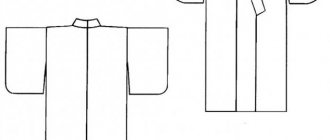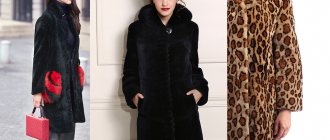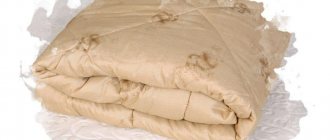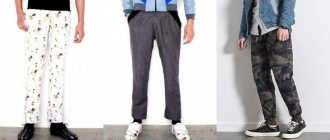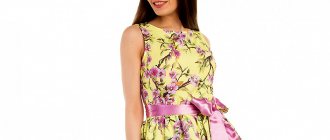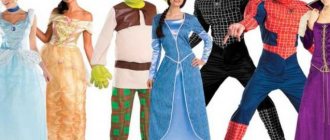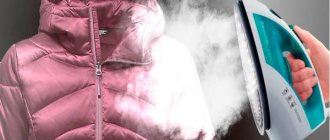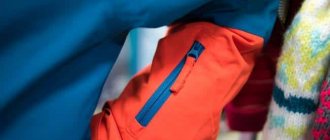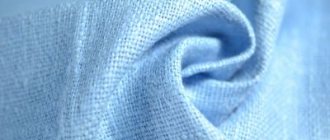The kimono, also called keikogi, dogi or karategi (we have discussed this linguistic diversity in relation to karate sports uniforms in detail here), is the most important element of a karate sports uniform. It’s not for nothing that people have an apt saying that people are greeted by their clothes. It is in a kimono that a fighter first enters the gym, spends hours, days and years in hard training, and competes. Let's look at what you need to keep in mind in order to choose the right sports uniform for you or your child.
Kimono density and fabric color
It is a mistake to believe that kimono comes in only one version. Before choosing a kimono, you need to decide for what purposes it will mainly be used. And it’s better to immediately understand the density of the fabric; it’s important to know some numbers. The density of kimono fabric is measured in the amount of fabric per square meter, measured in ounces (one ounce is 28.35 grams). For example, if the density of a kimono is 10 ounces, then one square meter is 10 ounces or 283.49 grams. You also need to know that a white kimono is made from two types of fabric - bleached cotton and unbleached cotton (with a slight beige tint).
So, now you know that kimonos differ, at a minimum, in the density and color of the material. Now let's decide for what purposes you need a kimono:
- Check with the seller for the density of the kimono! If you practice karate but don't compete much or at all, a kimono made from a lighter fabric, such as 10 ounces, is a good choice. A kimono made from less dense fabric (6-8 ounces) can be used for everyday training, but it is worth noting that a less dense kimono will stick to your body during training and you may experience discomfort when performing the technique. If you don't compete much, it also doesn't matter whether your kimono is made of bleached fabric or not, choose according to your taste and budget.
- If you compete in kata or kumite, then it is best to opt for a kimono made of denser fabric, 12-14 ounces, this density will allow the kimono to keep the material intact during fights and get the “noisy” effect when performing kata, i.e. .e. When performing strikes, you will hear the characteristic loud pops that the kimono makes. As for the color of the fabric, if the kimono is used for kumite, it does not matter whether your kimono is bleached, but for kata it is best to use a thick kimono made of bleached fabric, it will make your appearance more presentable to the judging panel (in kata, the external type of athlete).
Kimonos come in different varieties: white, black, red
Color is another important nuance that you should pay attention to when choosing a kimono. In order not to miss the mark, decide for what purpose you are purchasing the equipment. Any kimono is suitable for everyday home training - the main thing is that it is comfortable. But when visiting a dojo (a place where classes are held), it is better to choose the traditional white color - in most karate schools, no other form is simply allowed. The first belt in your life - also white - is usually sold complete with a kimono.
If you like black, don’t be upset – maybe someday you’ll be able to wear such a kimono. But this will require a lot of work - it is believed that only holders of the highest dans can wear a black uniform.
Sewing and shrinkage
It is best to choose fairly loose kimono options, since clothing that is too tight can cause discomfort during training and chafing on the body. At the same time, you should not go to the other extreme and take a kimono that is too wide; it will be difficult to move and perform techniques in it, and there is also a risk of getting tangled and falling. In general, before purchasing a kimono, it is advisable to try it on and try to perform several movements, you should feel comfortable.
After trying on, be sure to check with the seller how many centimeters the kimono shrinks after the first wash. This is a very important point , because... after the first wash, a kimono can shrink from 3 to 15 centimeters, depending on the material and its density. You won't be happy when your new kimono feels too small after the first wash. Choose a larger size kimono, taking into account its shrinkage.
To prevent the kimono from flying open during sudden movements, if a girl chooses a kimono, she needs to make sure that there are ties on the kimono that will prevent the kimono jacket from flying open.
Also, when choosing a kimono, it is important that the sleeves are not so long as to hide the wrists, the seams are tight - such clothes will be stronger and can last longer. The optimal sleeve length for karate training is considered to be 3/4 of the full length.
Features of the style
A kimono consists of a jacket and pants. The belt is not included in the kit, as it changes as the karateka grows in skill. And the need to change the belt arises somewhat more often than the need to change the kimono itself.
Pants should be loose so as not to restrict amplitude movements of the legs. Because during training, the uniform begins to absorb moisture, and wet fabric, if the pants are not designed correctly, will hinder movement at the moment the hips are thrown forward, which can affect the accuracy and power of strikes. Kimono pants can be either with an elastic band or with a rope tie. The choice here depends on the personal preferences of the athlete. The edges of the trouser legs are usually located at the ankles.
The sports uniform jacket for traditional karate styles is made with a wrap on the right side, for both men and women. The bottom edge of the jacket lies at the mid-thigh area, and the sleeve ends approximately in the middle of the forearm. For the styles coming out of Masutatsu Oyama's Kyokushinkai karate, the jacket has a slightly different cut, with the sleeves made shorter than traditional style karate jackets. Their edges are located above the middle of the forearm. This is done so that when performing such technical techniques as strikes or blocks with elbows, for example, mae hiji ate or hiji uke, the sleeve has time to slide off the elbow, and not “stick”, wrapping up on it, slowing down the attack or block.
For girls, under a kimono jacket, in addition to the mandatory chest protection, it makes sense to wear a thin white or flesh-colored T-shirt to avoid possible awkwardness.
The style of kimono for children certainly takes into account the structural features of the child’s body and its proportions, but in general it is similar to the style of the uniform for adults.
Fabric structure
The composition of the fabric and its texture also play an important role for different types of martial arts. Kimonos come in both smooth and woven fabric, thick and thin, from natural materials and with synthetic additives.
It is best to use a cotton kimono for karate training without adding synthetic materials; such a kimono is convenient if you need to practice techniques during regular training: the body will not overheat in it and will be able to breathe freely.
Kimonos with the addition of synthetics, such as polyester, are also sometimes used. The ratio of cotton to synthetics can vary greatly and can be either 1 to 10 or 10 to 1, which is something you should pay attention to when purchasing. It is considered optimal to add no more than 10-20% synthetics. It should be noted that kimonos with the addition of synthetic materials are less susceptible to shrinkage. This kimono dries faster and absorbs moisture well.
How to choose a comfortable kimono for karate?
Of course, all of the above requirements for a kimono are secondary. The main thing is that the karateka feels comfortable in it. And for this you need to fulfill several conditions:
- To choose the right size for a karate kimono, be guided by the size of your jacket. There is no need to strictly follow the numbers, since a kimono is a universal and multi-variant thing. The main thing is that the length of the legs and sleeves of the kimono at least approximately coincides with your measurements and meets the requirements that the school of your choice imposes on sportswear.
- All existing seams must be strong, and the cuffs must be reinforced with thick fabric. Meeting these requirements will help you choose a wearable karate gi.
- Note to girls: when making a purchase, check whether there are ties on the inside of the jacket that prevent the kimono from opening, and check whether they are sewn well.
And the last piece of advice: do not rush to choose a karate gi without asking your sensei for an opinion. Perhaps he will advise you to wait before purchasing or tell you which store to contact. Good luck in battle!
You might be interested
Embroidery on kimono
You can often find different embroideries on karate kimonos, let’s figure out what they mean.
Embroidery on the left side of the jacket with the organization's emblem:
Depending on the organization, it happens (the most popular):
— Kyokushankai (Kekushinkai)
— Shinkyokushin (Shinkyokushinkai)
— Kyokushin kan
Patch on the bottom of the jacket (also used on the pants and waistband)
Also, depending on the organization, there are the following types (the most popular):
Kyokushankai (Kekushinkai) - old version
Kyokushankai (Kekushinkai) - new version (from 2021)
— Shinkyokushin (Shinkyokushinkai)
— Kyokushin kan
Japanese embroidery of the athlete's name on the jacket
Embroidery on the left shoulder
A patch with the emblem of the organization in which the athlete trains is placed on the left shoulder
Also on the left shoulder you can often find “Ichigeki” embroidery - this is the emblem of the company that produces the kimono, meaning “Win with one blow”
Embroidery on the right shoulder
On the right shoulder there is embroidery with the emblem of the school or club in which the athlete trains
Belt size in cm
Children's:
- M00 195cm
- M0 200cm
- M1 205cm
- M2 215cm
- M3 225cm
- M4 230cm
Adults:
- A1 260cm. Height 165-177cm
- A2 280cm Height 177-181cm
- A3 300cm Height 181-185cm
- A4 320cm Height 185-192cm
Material
Karate kimonos are made from different materials, both natural and synthetic. They all have different properties, and the selection of suitable material depends, first of all, on the type of combat.
- Kata. This karate technique includes attacking and defensive movements that are carried out with one or more invisible opponents, shadow boxing. Demonstration fights are held in kata. The best kimono you can choose for kata is made from high-density natural cotton. It will perfectly remove moisture during combat and allow air to pass through. Thick cotton with a tight weave will make a loud bang. And in kata competitions this is an important indicator. The stronger the acoustic effect, the better.
- Kumite. This type of combat, unlike kata, is fought against an opponent and requires high intensity of movements. Several fights may take place during the competition. In order for a fighter to feel comfortable during fights, the kimono must breathe well, remove moisture, and be light. Therefore, kimonos made of mixed fabric and polyester, an ultra breathable and incredibly light material, are suitable for kumite. The better these properties of the fabric, the better the athlete feels.
- Traditional karate. If you need a kimono for traditional karate, then you can consider models made of 100% cotton and models made of mixed fabrics. If you have been practicing traditional karate for several days, the classic heavy cotton kimono will suit you. It is made from fairly dense fabric, so it will serve you for a long time. At the same time, the kimono will be comfortable to wear and comfortable in battle. For beginners, it is best to consider a kimono made from mixed fabrics so that it is fairly lightweight, easy to care for and inexpensive. In such a uniform, daily training will be comfortable and productive.
Kimonos not only made from cotton, but also from mixed fabrics are also suitable for children. Modern kimono fabrics are lightweight and do not cause discomfort. Active young athletes will not feel hot in them. These uniforms are high quality and low priced, so you won't have to worry about your child growing out of them too quickly. In addition, mixed fabric is easier to care for: it shrinks less when washed, dries faster, and irons better.
Which kimono to choose?
You should focus on natural cotton fabric. It is also necessary to take into account that cotton can shrink greatly when washed, so this can significantly affect the final size of the product (shrinkage can reach 5-7 cm in the upper part and 5 cm in the lower part). In modern models, this feature is usually taken into account, but in order to avoid unsuccessful outcomes, you should ask the seller about this in more detail.
Dogi should not be completely white, since this shade is only suitable for competitions and performances; to begin training, the shade of white in the uniform should be practical. The density of the material from which the product is sewn should be from 250-270 g/m2 to 300-350 g/m2.
Choosing a kimono is a very important and responsible process, because sportswear plays a significant role in mastering karate techniques, developing technique and accuracy of techniques, and conducting competitions and other sporting events. Therefore, when purchasing a uniform, you should carefully study all the subtleties and issues in order to know what to look for and what kind of kimono to ultimately purchase.
Cut
For each type of karate, different cut equipment is suitable:
- Kata. A kimono for kata requires short sleeves and trousers, and a long jacket. This cut allows you to make every movement freely and in full force. The jacket stays wrapped even during very intense movements, ensuring optimal sound.
- Kumite. For this type of combat, a kimono with an elongated jacket, long sleeves and trousers is provided. Thanks to this, the athlete is free to move and is protected from the jacket opening during the fight. This gives the athlete a neat appearance and does not distract him from the fight.
- Traditional karate. The standard cut for traditional karate is long sleeves and trousers.
Belts in Brazilian Jiu-Jitsu
For children under 15 years old, there are only five belts: white, gray, yellow, orange, green.
For students 15 and older, the belt system in Brazilian Jiu-Jitsu is: white, blue, purple (often called violet), brown, black, black-red (sometimes called coral), red-white and red.
Stripes-Stripes (stripes)
Many Brazilian Jiu-Jitsu schools and academies also use a stripe system in addition to the belt system to encourage their students to develop. They are glued with a regular plaster (tapes), the same one used to wrap your fingers during training. In fact, a belt that has scored 4 stripes is already on the threshold of a new belt certification. Getting the next one is the next step. It is worth mentioning that the presence of stripes on one athlete does not mean that his skills are higher than those of a jitter without stripes. Stripes in Brazilian Jiu-Jitsu are more of a purely motivating moment and trainers give them at their discretion. Some BJJ schools do not use this system at all.
